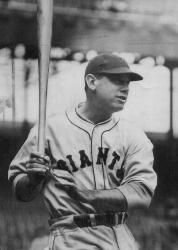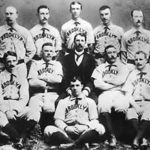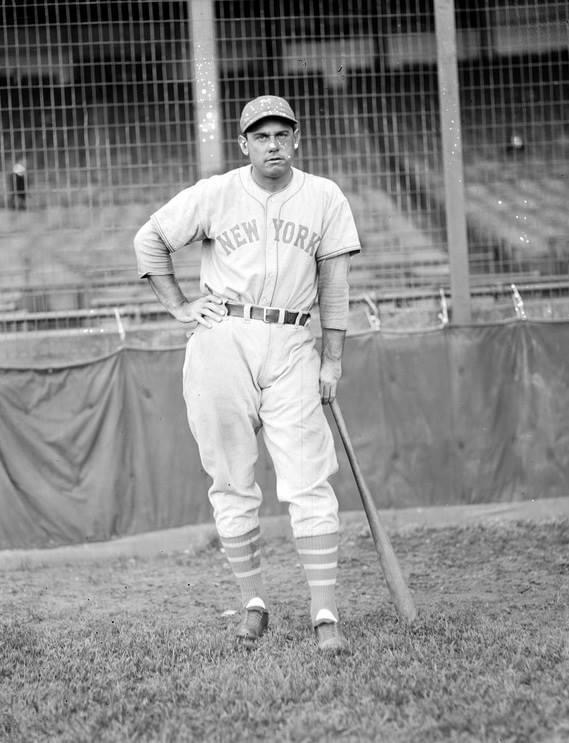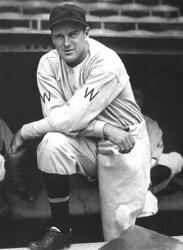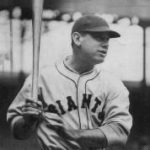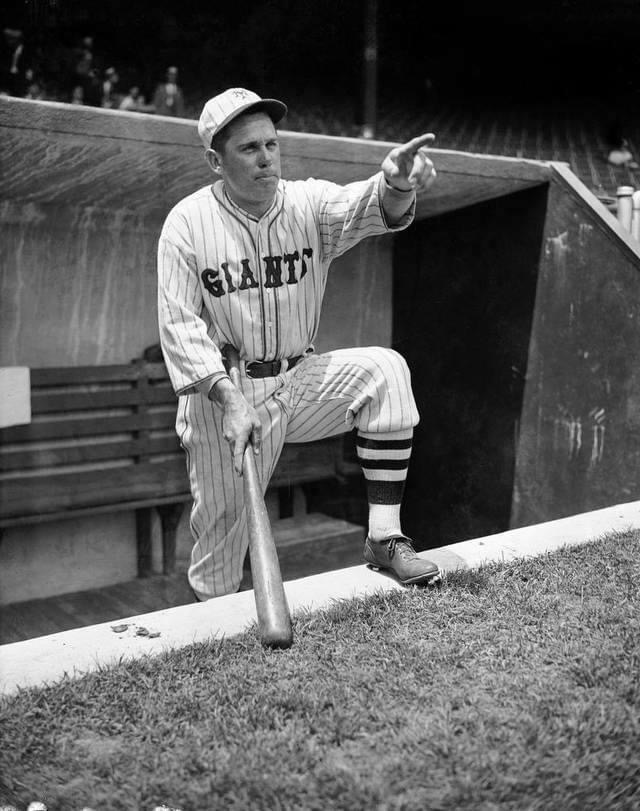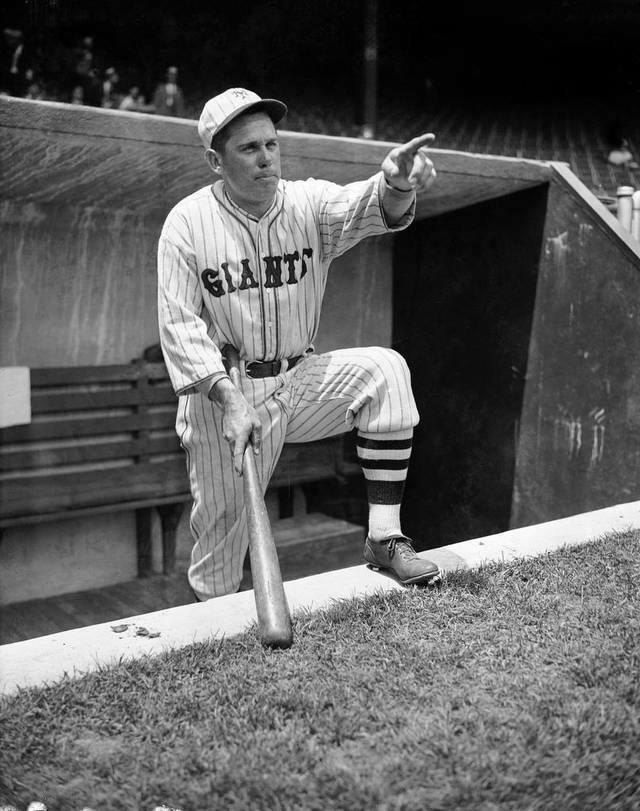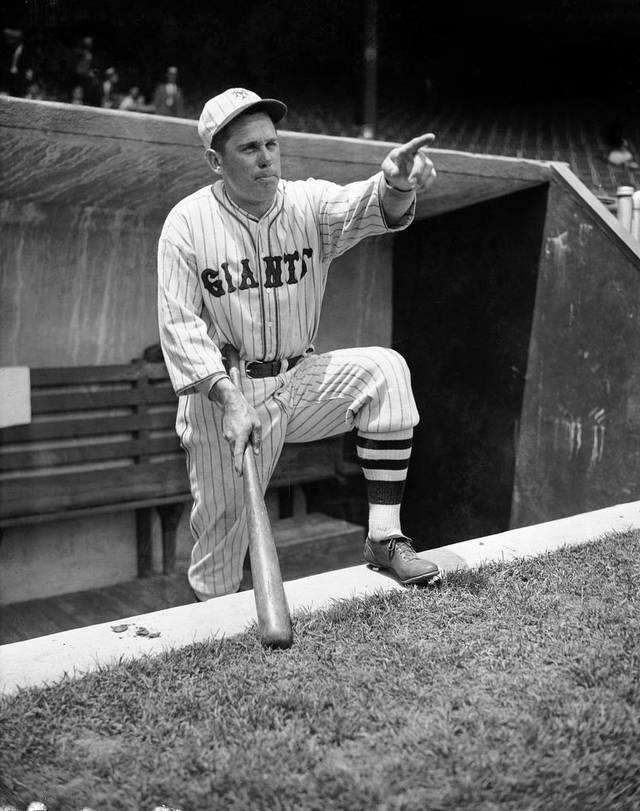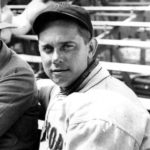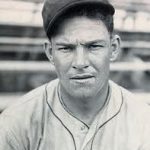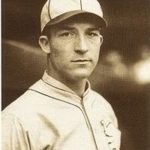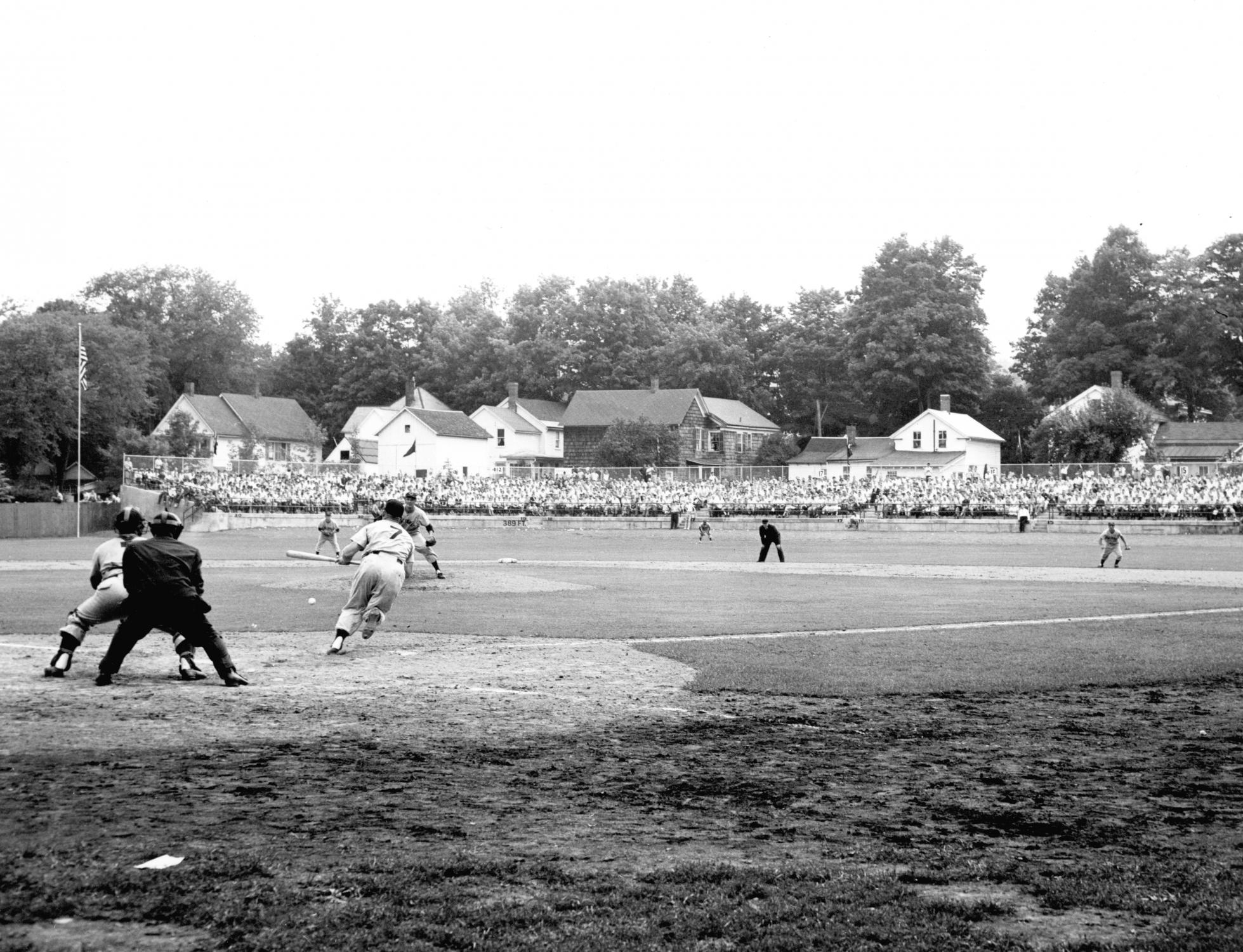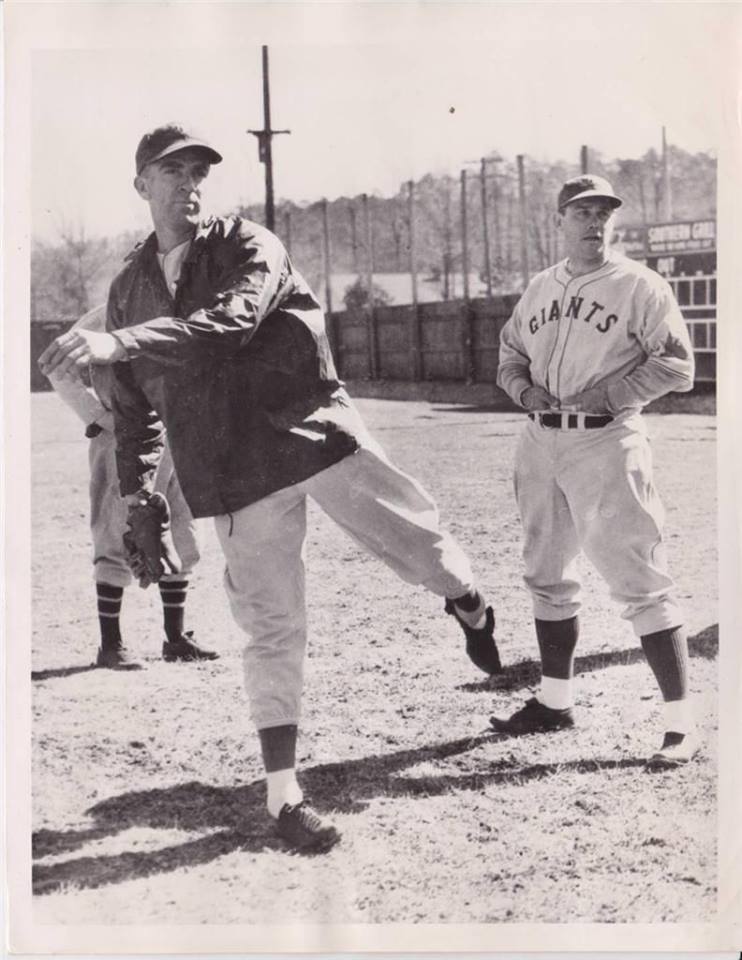Bill Terry Stats & Facts
Bill Terry
Position: First Baseman
Bats: Left • Throws: Left
6-1, 200lb (185cm, 90kg)
Born: October 30, 1898 in Atlanta, GA
Died: January 9, 1989 in Jacksonville, FL
Buried: Evergreen Cemetery, Jacksonville, FL
Debut: September 24, 1923 (5,348th in MLB history)
vs. CIN 1 AB, 0 H, 0 HR, 0 RBI, 0 SB
Last Game: September 22, 1936
vs. PHI 3 AB, 1 H, 0 HR, 0 RBI, 0 SB
Hall of Fame: Inducted as Player in 1954. (Voted by BBWAA on 195/252 ballots)
View Bill Terry’s Page at the Baseball Hall of Fame (plaque, photos, videos).
Bill Terry Baseball Reference Page
Full Name: William Harold Terry
Nicknames: Memphis Bill or Smiling Bill
View Player Bio from the SABR BioProject
Nine Players Who Debuted in 1923
Lou Gehrig
Heinie Manush
Bill Terry
Hack Wilson
Willie Kamm
Ted Lyons
Moe Berg
Charley Root
Earl Whitehill
The Bill Terry Teammate Team
C: Gus Mancuso
1B: George Kelly
2B: Frankie Frisch
3B: Fred Lindstrom
SS: Travis Jackson
LF: Ross Youngs
CF: Jo-Jo Moore
RF: Mel Ott
SP: Carl Hubbell
SP: Fred Fitzsimmons
SP: Art Nehf
SP: Hal Schumacher
RP: Carl Mays
M: John McGraw
Baseball is the only game you can watch on the radio. Join the community today and listen to hundreds of broadcasts from baseball’s golden age
Notable Events and Chronology for Bill Terry Career
Bill Terry Biography
Playing first base in the city of New York from 1925 to 1936 caused Bill Terry to be overshadowed much of the time by Lou Gehrig of the crosstown New York Yankees. Nevertheless, Terry established himself as the National League’s finest first baseman during his playing days, and as one of the very best in the history of the senior circuit. The last N.L. player to bat .400, Terry posted a major-league best .352 batting average during the 1930s, topping the .340-mark on six separate occasions. An outstanding fielder as well, the New York Giants’ first baseman was generally considered to be the top gloveman at his position over the course of his career.
Born in Atlanta, Georgia on October 30, 1898, William Harold Terry didn’t make his major league debut with the New York Giants until he was almost 26 years of age. Terry got his start in organized ball pitching for a local team in the Georgia-Alabama League in 1915. Sold to Shreveport of the Texas League at the end of the season, he spent the next two years laboring in mediocrity, compiling a record of 14-11 with a 3.00 ERA in 1917, while batting just .231. Not offered a contract at the conclusion of the 1917 campaign, Terry moved to Memphis, where he worked for Standard Oil and played first base for the company’s semi-pro baseball team. Terry was discovered almost five years later by New York Giants manager John McGraw on one of the latter’s annual trips to Memphis. After being signed by McGraw to a $5,000 annual salary, Terry acquired the nickname “Memphis Bill.”
Terry spent most of the 1922 and 1923 seasons tearing up the American Association. But, with future Hall of Famer George Kelly firmly entrenched at first base for the Giants, Terry’s road to New York was a slow and arduous one. He finally joined the Giants during the latter stages of the 1923 campaign, batting just .143 for the eventual National League champions. Terry earned a spot on New York’s roster the following year, but he was used sparingly, serving primarily as Kelly’s back-up at first base and as a pinch-hitter.
Terry gained significantly more playing time in 1925, playing in 133 games in his first full season, batting .319, driving in 70 runs, and scoring 75 others. However, splitting his time between first base and the outfield, Terry assumed a part-time role with the team the following year, batting .289 and knocking in 43 runs in only 225 official at-bats. Terry finally supplanted Kelly as New York’s starting first baseman in 1927, maintaining a stranglehold on the position for the next nine seasons.
The lefthanded-hitting Terry was an extremely productive hitter in both 1927 and 1928, surpassing 100 runs batted in and 100 runs scored both seasons while compiling a .326 batting average each year. Although he was primarily a gap-hitter, stroking line drives into the deep power alleys at the Polo Grounds, Terry also had the ability to pull the ball into the short right-field stands at his home ballpark from time to time. Terry hit 20 homers in 1927, before stroking another 17 home runs the following year. He also demonstrated that he was an outstanding fielder. Possessing soft hands and silky moves around the bag, Terry quickly established himself as the senior circuit’s top-fielding first baseman. He went on to lead National League first basemen in fielding average twice, double plays three times, putouts and assists five times each, and total chances per-game nine times.
Terry had his finest season-to-date in 1929, driving in 117 runs, scoring 103 others, and placing among the league leaders with a .372 batting average and 226 hits, en route to earning a third-place finish in the league MVP voting. He followed that up with a historic performance in 1930, becoming the last National League player to hit over .400. In addition to topping the circuit with a mark of .401, Terry hit 23 home runs, established career highs with 129 runs batted in and 139 runs scored, amassed 15 triples and 39 doubles, and set an all-time N.L. record by accumulating 254 hits. Reflecting back on his memorable season, Terry later said, “To hit .400 you need a great start and you can’t have a slump. The year I did it, I was around .410, .412 all season and I was really hitting the ball on the nose.”
The senior circuit did not present an official MVP Award at the conclusion of the 1930 season, but Terry was named the “unofficial” winner by The Sporting News, even though Hack Wilson knocked in a major-league record 191 runs for the Chicago Cubs.
Terry continued to excel in each of the next two seasons, finishing a close second in the National League batting race in both 1931 and 1932, with marks of .349 and .350, respectively. He also both knocked in and scored more than 100 runs for the fifth and sixth consecutive seasons while compiling more than 200 hits for the third and fourth straight times. After leading the league with 20 triples in 1931, Terry hit a career-high 28 homers the following year.
Terry’s offensive production fell off somewhat after he took over the managerial reins from an ailing John McGraw midway through the 1932 campaign. Yet, he remained a solid offensive performer until he elected to concentrate solely on managing at the end of the 1936 season. After hitting 28 home runs in 1932, Terry never again finished in double-digits in that category. Nor did he ever again drive in as many as 100 runs. But Terry batted well over .300 in each of his four remaining years, compiling averages of .354 in 1934 and .341 in 1935. He ended his playing career with a batting average of .341 – the highest career mark ever posted by a left-handed hitter in the National League. Terry finished in the top 10 in the league MVP voting a total of six times, representing the senior circuit at first base in each of the first three All-Star games.
After retiring as an active player at the conclusion of the 1936 campaign, Terry continued to manage the Giants until 1941. He posted a record of 823-661 during his managerial career, leading his team to the National League pennant in 1933, 1936, and 1937, and to the world championship in 1933. After retiring from managing, Terry settled in Jacksonville, Florida, where he owned an automobile dealership. He purchased the Jacksonville Braves double-A team in 1958 and served as a member on the Hall of Fame Veterans Committee for several years, after being inducted to Cooperstown himself in 1954. Terry passed away on January 9, 1989, at age 90.
Terry’s bluntness and unwillingness to cater to the media as both a player and as a manager may have been at least partly responsible for the lengthy wait he endured before finally being voted into the Hall of Fame. Another contributing factor might well have been his somewhat rebellious nature. A staunch critic of the baseball establishment, Terry incurred the wrath of owners and media members at different times by speaking out against the manner in which the game was run. Among his more memorable quotes, Terry proclaimed, “Baseball must be a great game to survive the fools who run it.” He also stated, “No business in the world has ever made more money with poorer management.”
During his Hall of Fame induction speech, Terry quipped, “I don’t know what kept me
out (of the Hall of Fame), newspapermen or just that you don’t want me up here.”
@ET-DC@eyJkeW5hbWljIjp0cnVlLCJjb250ZW50IjoicG9zdF90YWdzIiwic2V0dGluZ3MiOnsiYmVmb3JlIjoiTGVhcm4gTW9yZSBhYm91dCB0aGUgdGVhbXMsIHBsYXllcnMsIGJhbGwgcGFya3MgYW5kIGV2ZW50cyB0aGF0IGhhcHBlbmVkIG9uIHRoaXMgZGF0ZSBpbiBoaXN0b3J5IC0gLSAtIC0gLSAtIC0gIiwiYWZ0ZXIiOiIiLCJsaW5rX3RvX3Rlcm1fcGFnZSI6Im9uIiwic2VwYXJhdG9yIjoiIHwgIiwiY2F0ZWdvcnlfdHlwZSI6InBvc3RfdGFnIn19@
Baseball is the only game you can watch on the radio. Join the community today and listen to hundreds of broadcasts from baseball’s golden age
Factoids, Quotes, Milestones and Odd Facts
The last man to hit .400 in the National League, Bill Terry succeeded John McGraw as manager of the New York Giants. He led the team to two pennants and one world championship in ten seasons at the helm, and was elected to the Hall of Fame in 1954.
Played For
New York Giants (1923-1936)
Managed
New York Giants (1932-1941)
Similar: Mark Grace
Linked: Jim Bottomley, Chick Hafey
Best Season, 1930
His 254 hits and .401 batting average haven’t been surpassed in the NL since. He posted a .619 slugging mark, a .452 OBP, and drove in 129 runs. he played every game and never went more than two days without a hit.
Post-Season Appearances
1924 World Series
1933 World Series
1936 World Series
Factoid
When John McGraw offered the Giants’ managerial job to Bill Terry, it was the first conversation between the two in nearly two years.
Where He Played: First base
Batting Feats
-
- May 29, 1928: Cycle…
-
- May 29, 1928: Cycle…
All-Star Selections
1933 NL
1934 NL
1935 NL
Other Resources & Links
Coming Soon
If you would like to add a link or add information for player pages, please contact us here.

